The document discusses the C++ iostream library, detailing its structure, including header files and class hierarchies for input/output operations. It describes how the library facilitates formatted and unformatted I/O through specific classes and functions, alongside the buffering concept provided by streambuf. Furthermore, it outlines the manipulation of streams and the usage of predefined manipulators and file I/O operations with fstreams.
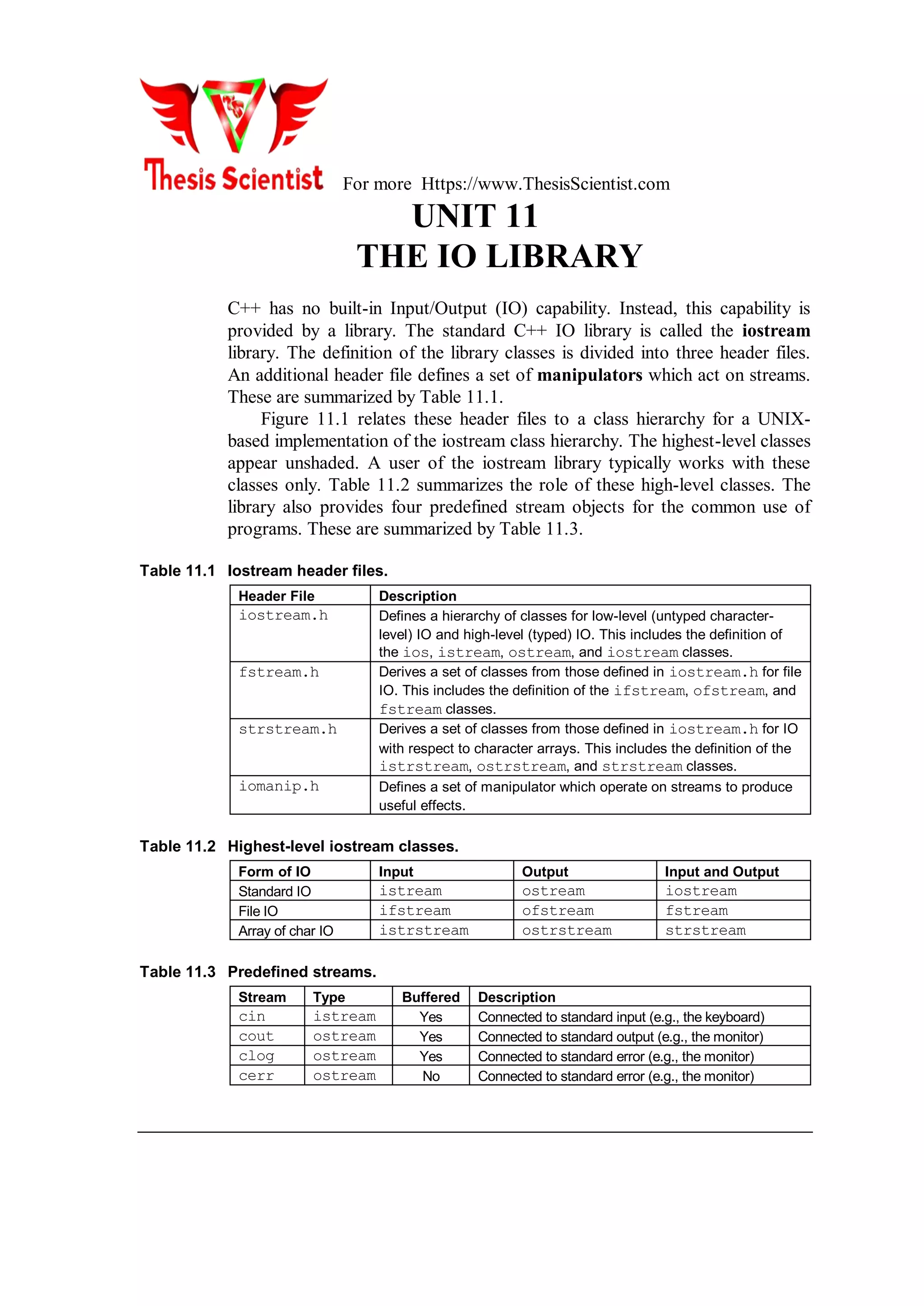



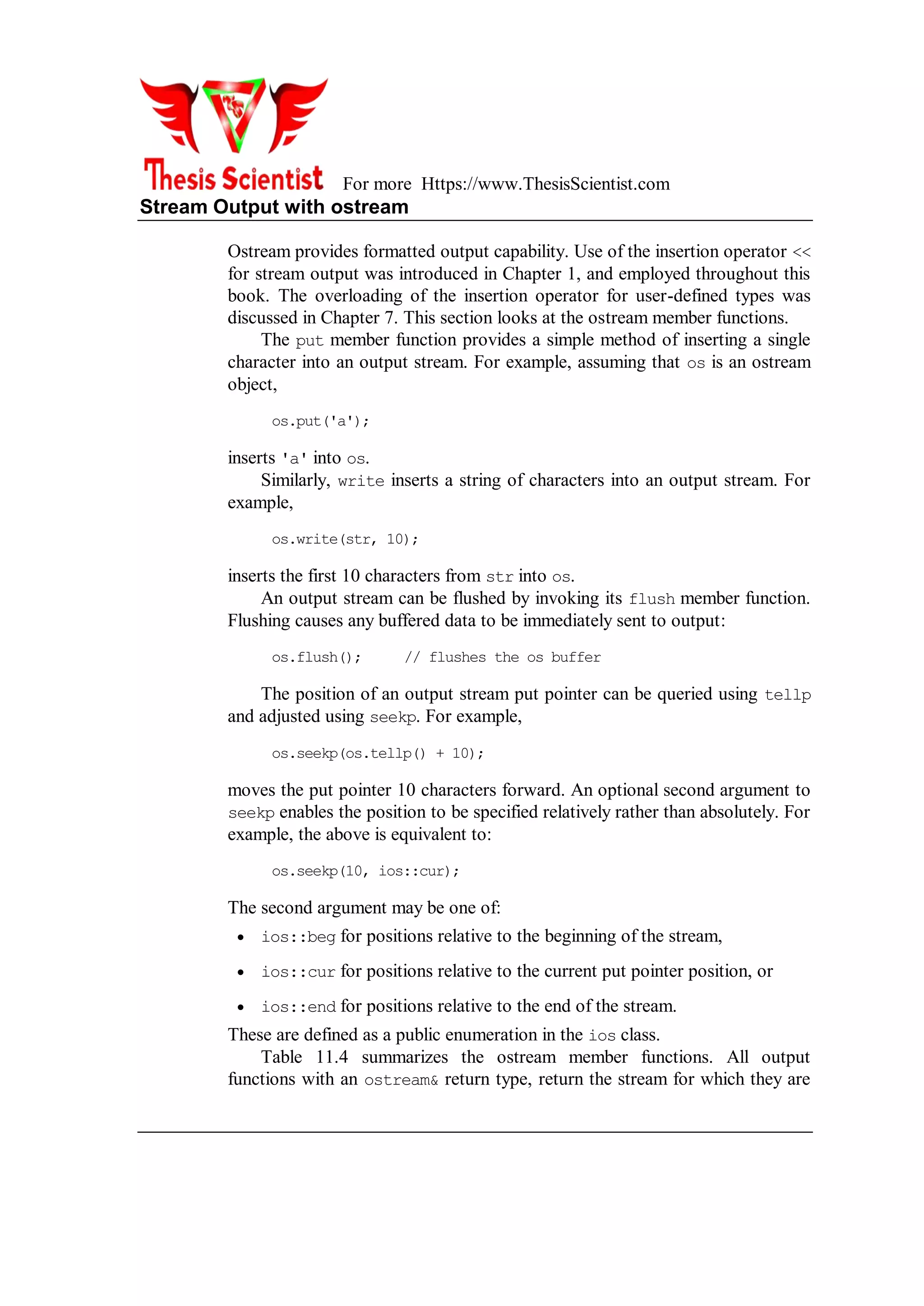

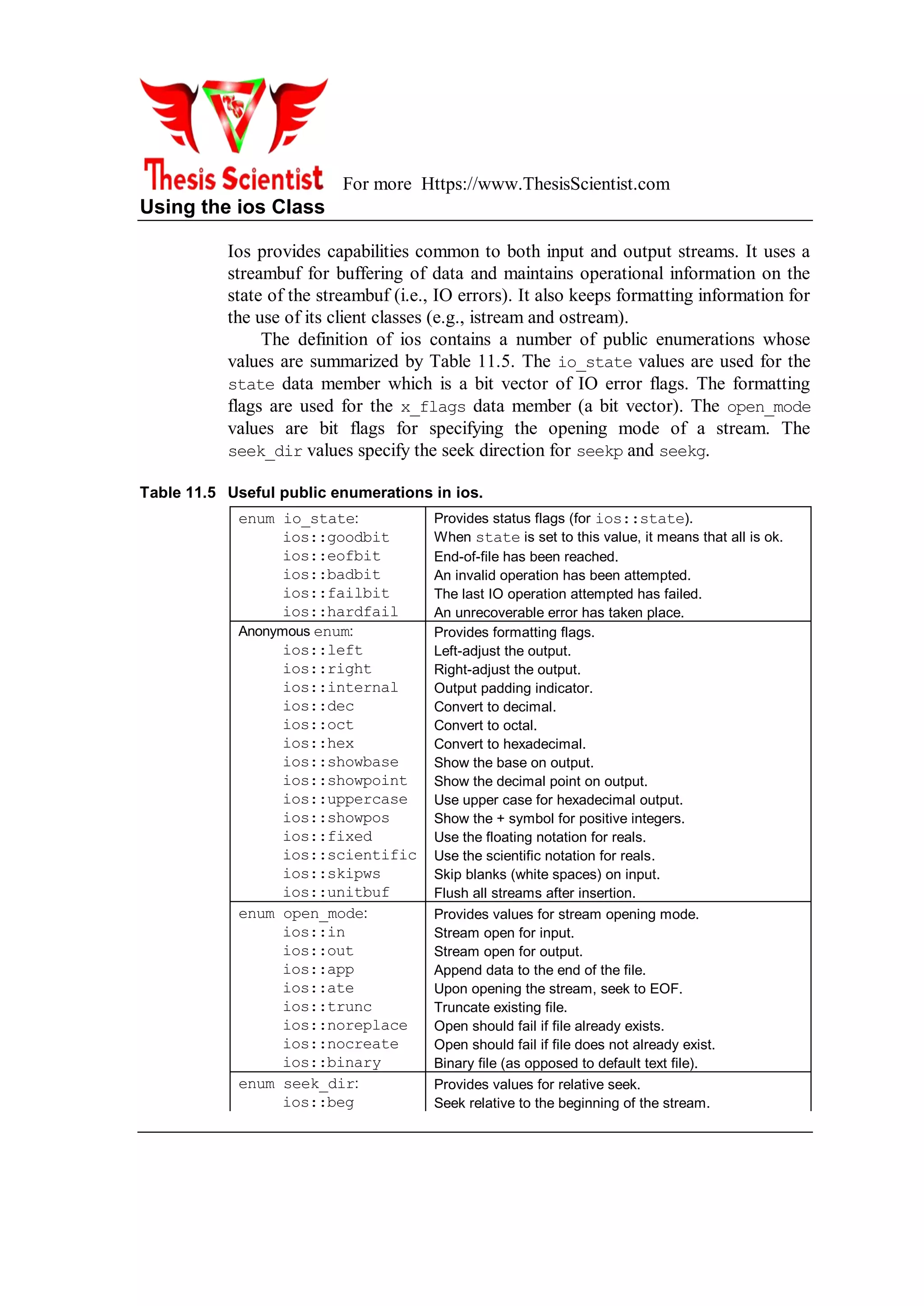
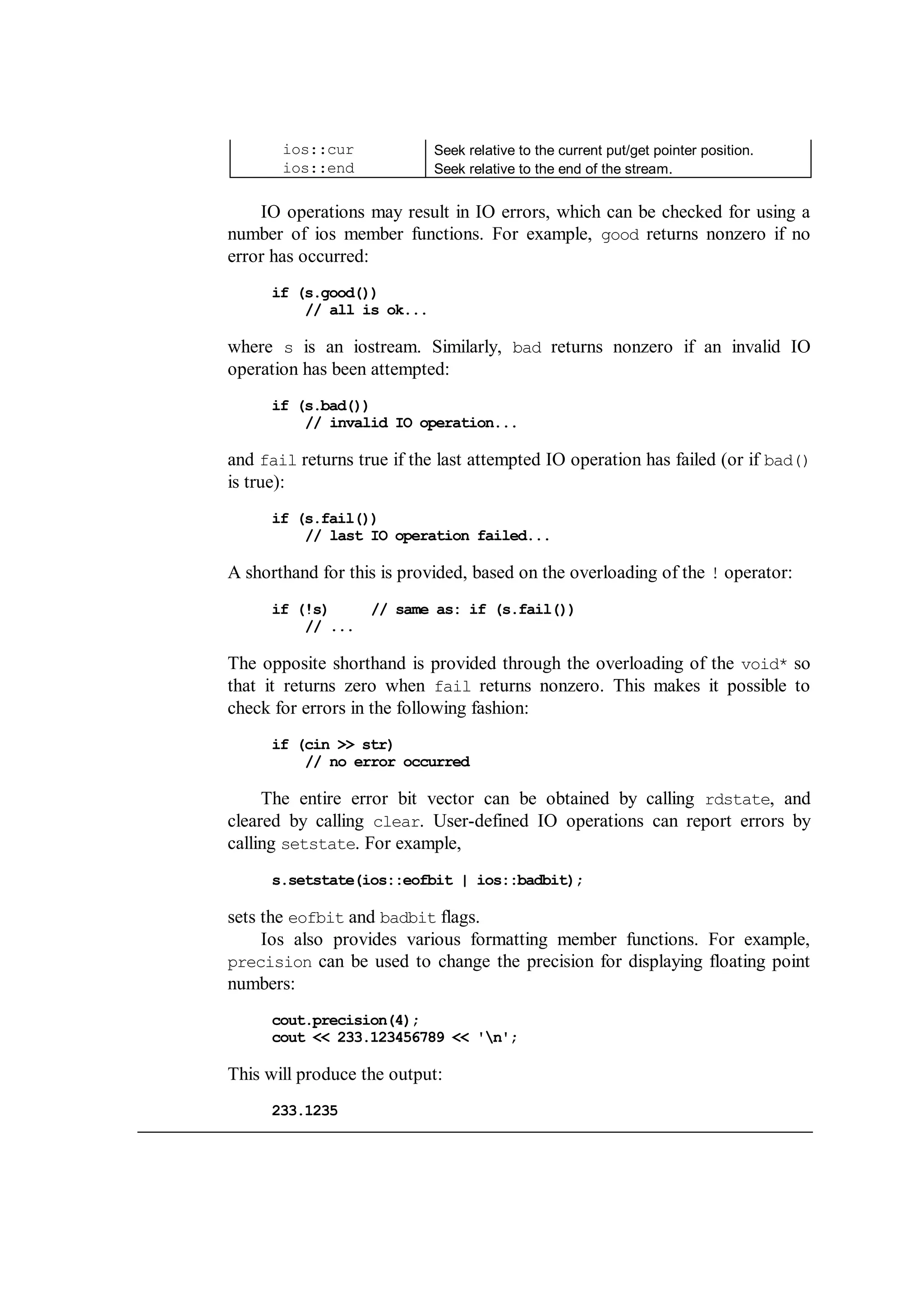
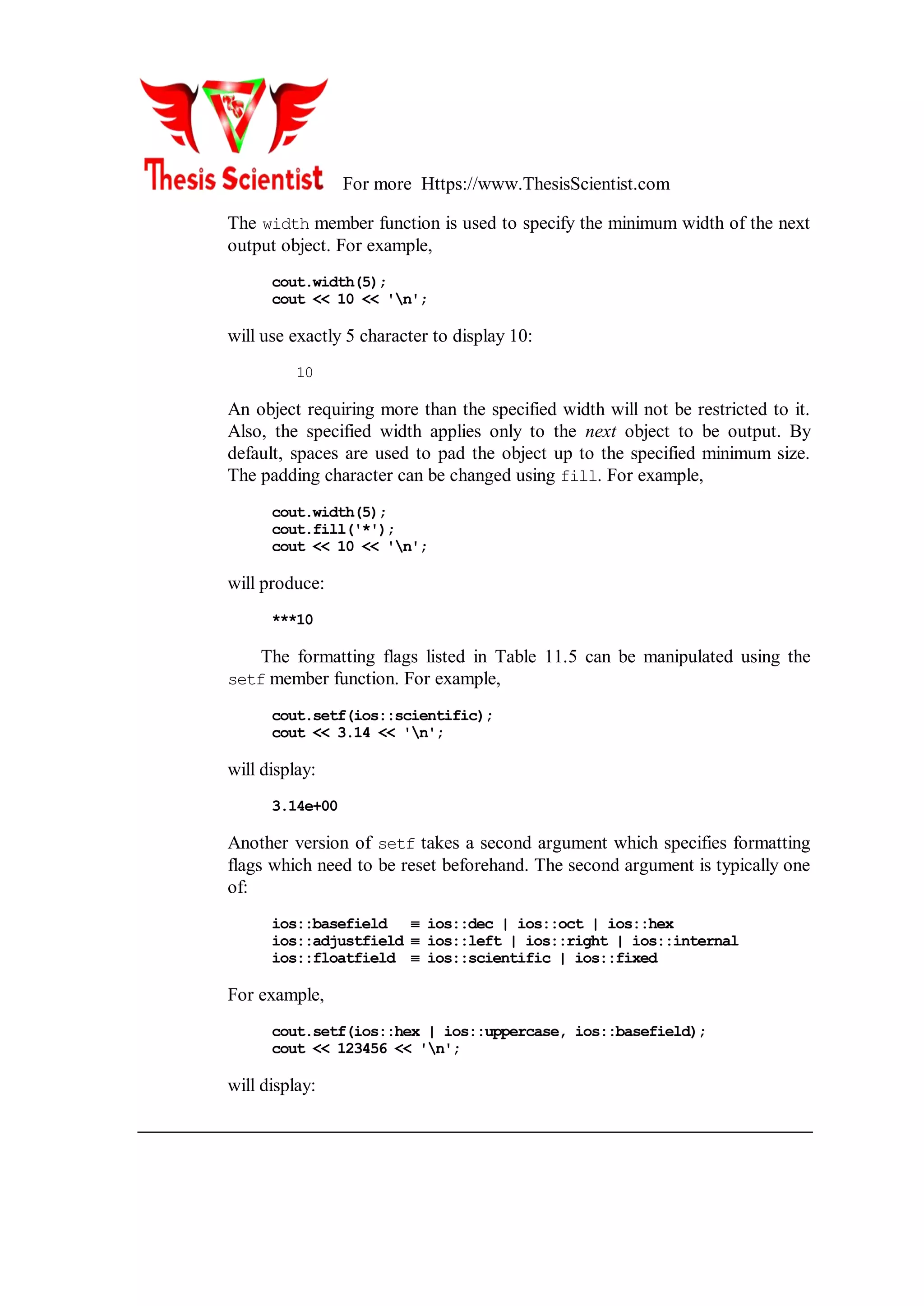



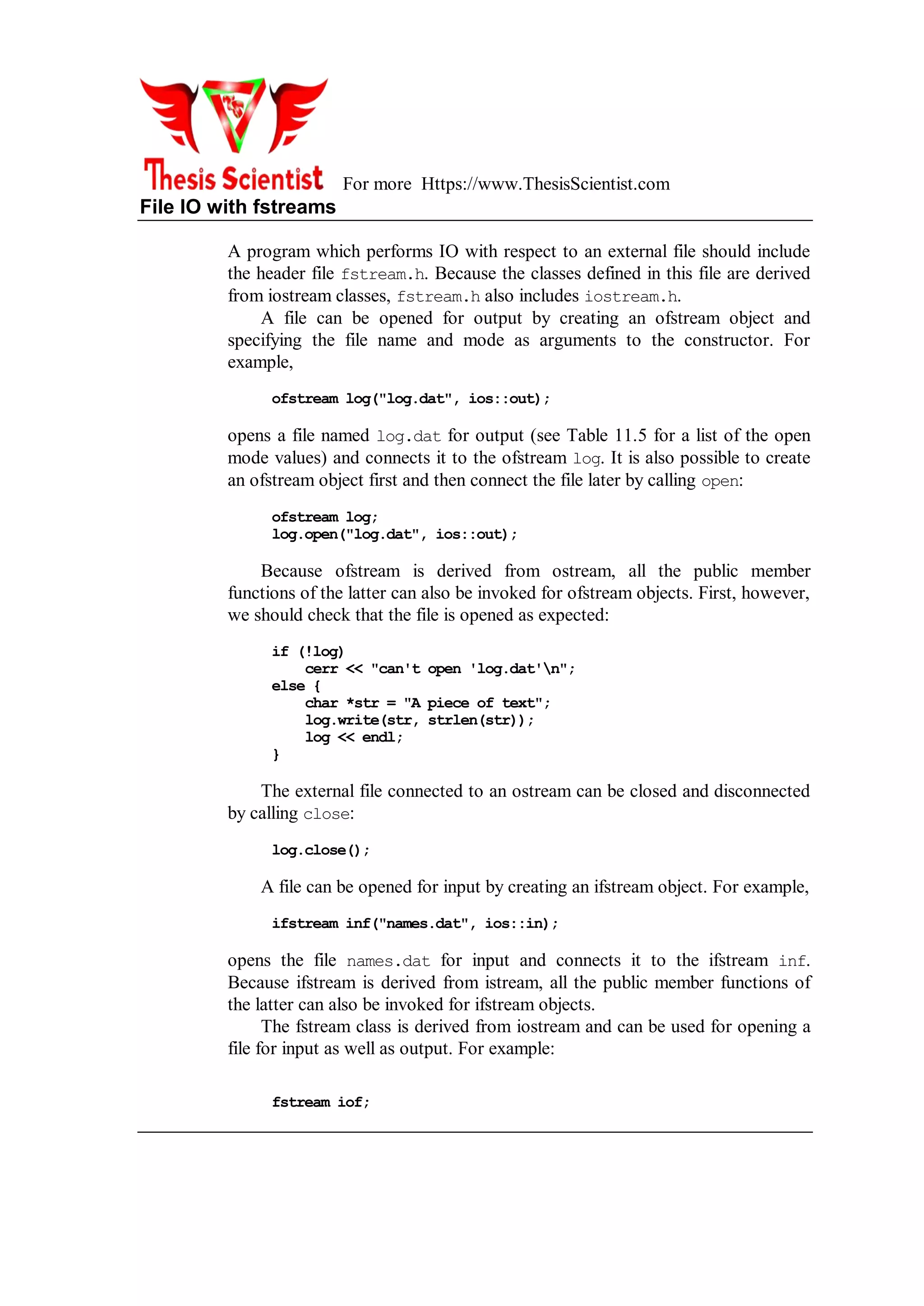
![iof.open("names.dat", ios::out); // output
iof << "Adamn";
iof.close();
char name[64];
iof.open("names.dat", ios::in); // input
iof >> name;
iof.close();
Table 11.7 summarizes the member functions of ofstream, istream, and
fstream (in addition to those inherited from their base classes).
Table 11.7 Member functions of ofstream, ifstream, and fstream.
ofstream (void);
ofstream (int fd);
ofstream (int fd, char* buf, int size);
ofstream (const char*, int=ios::out, int=filebuf::openprot);
The first version makes an ofstream which is not attached to a file. The
second version makes an ofstream and connects it to an open file
descriptor. The third version does the same but also uses a user-
specified buffer of a given size. The last version makes an ofstream and
opens and connects a specified file to it for writing.
ifstream (void);
ifstream (int fd);
ifstream (int fd, char* buf, int size);
ifstream (const char*, int=ios::in, int=filebuf::openprot);
Similar to ofstream constructors.
fstream (void);
fstream (int fd);
fstream (int fd, char* buf, int size);
fstream (const char*, int, int=filebuf::openprot);
Similar to ofstream constructors.
void open (const char*, int, int = filebuf::openprot);
Opens a file for an ofstream, ifstream, or fstream.
void close (void);
Closes the associated filebuf and file.
void attach(int);
Connects to an open file descriptor.
void setbuf(char*, int);
Assigns a user-specified buffer to the filebuf.
filebuf* rdbuf (void);
Returns the associated filebuf.](https://image.slidesharecdn.com/chap11c-170509085922/75/THE-IO-LIBRARY-in-C-14-2048.jpg)
![For more Https://www.ThesisScientist.com
Array IO with strstreams
The classes defined in strstream.h support IO operations with respect to
arrays of characters. Insertion and extraction on such streams causes the data
to be moved into and out of its character array. Because these classes are
derived from iostream classes, this file also includes iostream.h.
The three highest-level array IO classes (ostrstream, istrstream, strstream)
are very similar to the file IO counterparts (ofstream, ifstream, fstream). As
before, they are derived from iostream classes and therefore inherit their
member functions.
An ostrstream object is used for output. It can be created with either a
dynamically-allocated internal buffer, or a user-specified buffer:
ostrstream odyn; // dynamic buffer
char buffer[1024];
ostrstream ssta(buffer, 1024); // user-specified buffer
The static version (ssta) is more appropriate for situations where the user is
certain of an upper bound on the stream buffer size. In the dynamic version,
the object is responsible for resizing the buffer as needed.
After all the insertions into an ostrstream have been completed, the user
can obtain a pointer to the stream buffer by calling str:
char *buf = odyn.str();
This freezes odyn (disabling all future insertions). If str is not called before
odyn goes out of scope, the class destructor will destroy the buffer. However,
when str is called, this responsibility rests with the user. Therefore, the user
should make sure that when buf is no longer needed it is deleted:
delete buf;
An istrstream object is used for input. Its definition requires a character
array to be provided as a source of input:
char data[128];
//...
istrstream istr(data, 128);
Alternatively, the user may choose not to specify the size of the character
array:
istrstream istr(data);
The advantage of the former is that extraction operations will not attempt to
go beyond the end of data array.](https://image.slidesharecdn.com/chap11c-170509085922/75/THE-IO-LIBRARY-in-C-15-2048.jpg)
